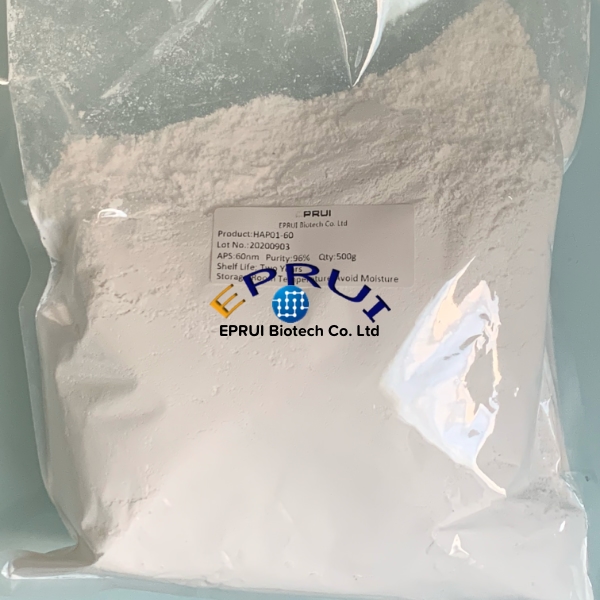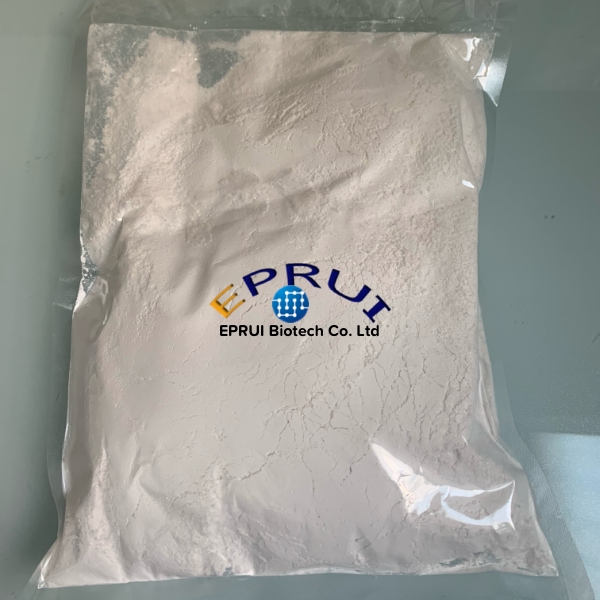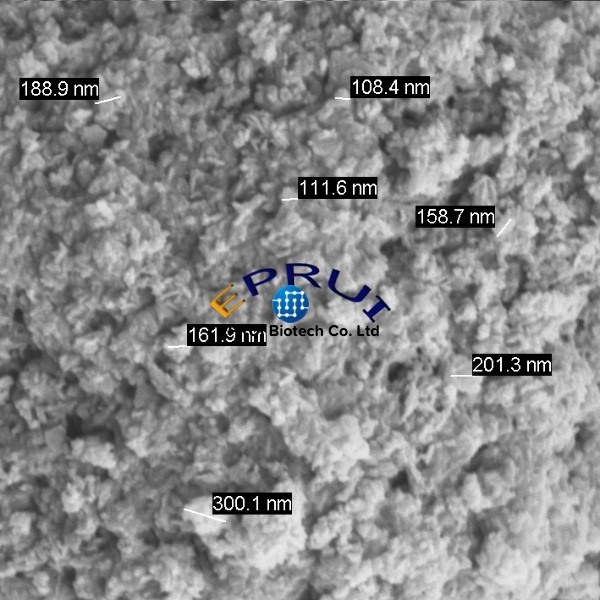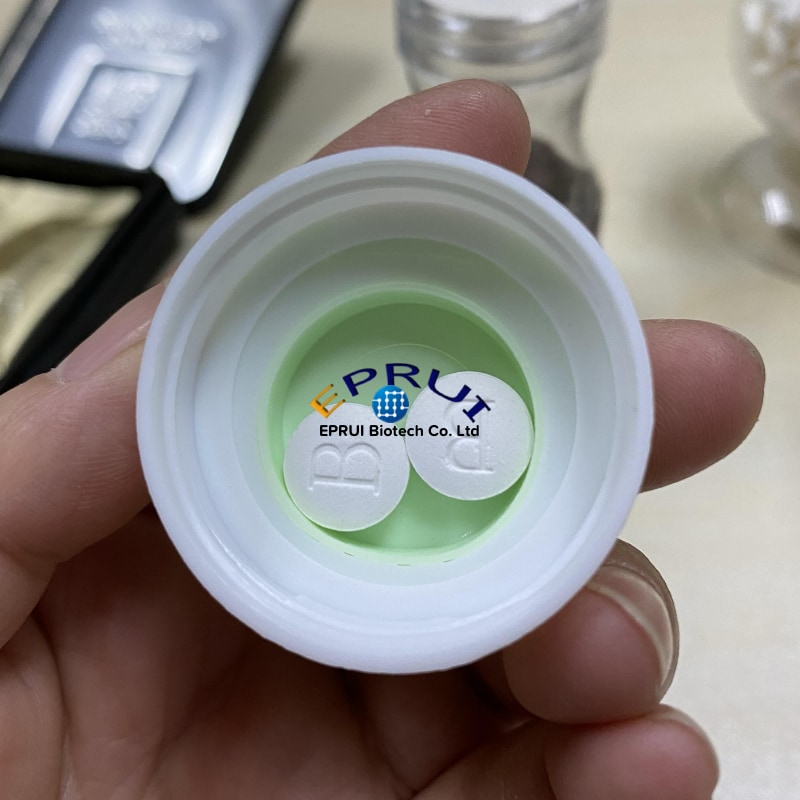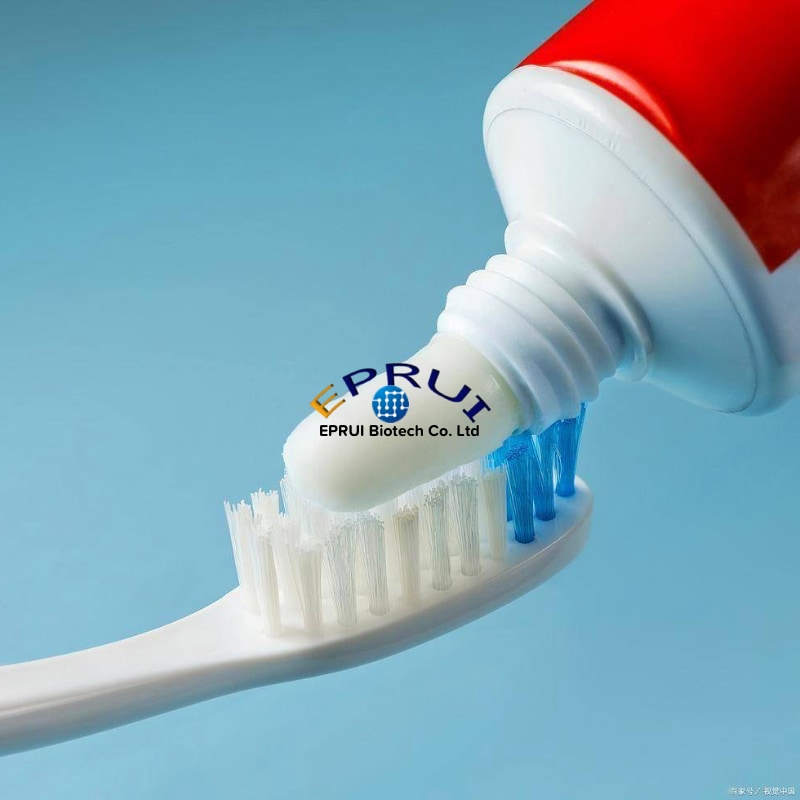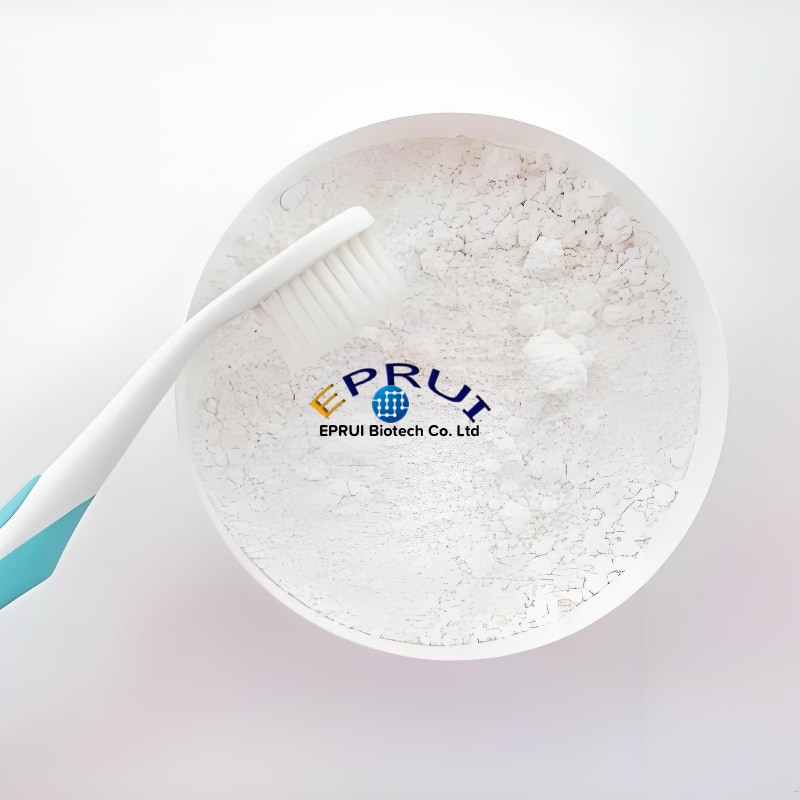Project Description
Nano Hydroxyapatite Powder for Toothpaste
Human beings’ teeth are a complex structure made of many different parts. Nano Hydroxyapatite (HA) is one of the building blocks that make up our tooth enamel, dentin, and cementum. The content of HAP is 65% in human skeleton, 70% in dentin and 95% in enamel.
This naturally occurring mineral gives our teeth and bones their hard and strong quality. However, plaque, as well as foods high in sugar and acidic drinks, can negatively affect your teeth by hurting tooth enamel.
EPRUI supplies food grade synthetic nano hydroxyapatite powder with proved safe quality and competitive price. Our nano HAP is 100% synthetic and animal origin free.
EPRUI Biotech Trusted By
Specifications of Nano Hydroxyapatite Powder for Toothpaste Use

Complete Buying Guide of Toothpaste Used Nano Hydroxyapatite Powder
Synthetic hydroxyapatite can help teeth remineralization which prevent and heal cavities. The idea of synthesizing hydroxyapatite as a means of restoring this was first proposed by NASA in 1970s due to Astronauts losing mineral from their teeth and bone in a gravity-free environment. Based on continuous related scientific research in past centuries,fluorine and hydroxyapatite are generally acknowledged components that can promote tooth mineralization. This has been confirmed in double-blind experiments in medical institutions, In Situ and In Vitro experiments. Our current customers are mostly dentists and oral health professionals from dental care centers all over the world. According to their testimony, hydroxyapatite added toothpaste can prevent and treat tooth sensitivity and remove dental discoloration, tartar so as to achieve non-destructive whitening.
The currently available types for making toothpaste,toothpaste powder, toothpaste tablet, dentifrice, mouthwash and other oral care products are HAP01-60:60nm 96% nano hydroxyapatite powder, HAP01-200:200nm 96% HAP nano powder and HAP01-2u: 2um hydroxyapatite powder. Both HAP01-60 and HAP01-200 are with rod shaped particles. The aspect ratio(length:width) of our HAP01-60nm(Length 130nm:width 60nm) is 2.2 while the aspect ratio(length:width) of our HAP01-200nm(Length 300nm:width 200nm) is 1.5,which are both considered safe when used at concentrations up to 10% in toothpaste, and up to 0.465% in mouthwash according to SCCS.
You can download the complete SCCS opinion on nano hydroxyapatite here.
1. How to choose the particle size for hydroxyapatite toothpaste: Nano grade or Micro grade?
There are different types of hydroxyapatite toothpaste.
Nano hydroxyapatite toothpaste contains nano hydroxyapatite particles and micron sized hydroxyapatite toothpaste contains micron level Nano hydroxyapatite toothpaste has small particle size, large surface area, strong binding ability with protein (bacteria contain protein) and pigment;
Micron level hydroxyapatite toothpaste has excellent friction properties. In the process of brushing teeth, nano hydroxyapatite can be effectively adsorbed on bacteria, plaque and pigment.
The friction characteristics of micron sized hydroxyapatite particles can work together with toothbrush to remove dental stains, plaque and calculus more effectively.
2. What are the applications of hydroxyapatite toothpaste?
- Remove tooth stain, tartar and dental calculus to achieve non-destructive whitening effect
- Remove bad breath
- Prevention and treatment of periodontitis, gingival bleeding, oral ulcer, tooth loosening and other oral diseases
- Prevention and treatment of dental allergy
- Prevention and treatment of dental caries
- Prevention and treatment of complications and sequelae caused by orthodontic, tooth cleaning and other professional treatment methods
3. What are the benefits of using hydroxyapatite in toothpaste?
Tooth enamel is the outer layer of your teeth. It is the hardest substance in the body and contains a high percentage of minerals, including hydroxyapatite. Taking good care of this part of your teeth is a very important step towards overall dental health. So remember to avoid highly acidic and sugary foods and drinks. Be gentle when cleaning your teeth, as excessive or harsh toothbrushing can be harmful too. Luckily, you have a natural shield that protects your tooth enamel, saliva! Your saliva helps with remineralization, a continuous reparative process that builds and maintains tooth enamel.
Besides, brushing with a toothpaste that contains active hydroxyapatite can assist with enamel restoration and remineralization too. Some toothpaste and mouthrinses contain a nanocrystal form of hydroxyapatite (nHA) or a zinc combination (Zn-HA). According to an article published in Materials, hydroxyapatite toothpaste can counteract the effects of sodas, energy drinks, and other acidic beverages. By forming a protective buffer on the enamel, hydroxyapatite particles can decrease mineral loss and tooth erosion. Besides, synthetic hydroxyapatite nanoparticles have excellent biocompatibility and biological activity, which can realize chemical bonding with the body tissue on the interface, and has certain solubility in the body, can release harmless ions to the body, participate in metabolism in the body, stimulate or induce the proliferation of bone, and promote the repair of the defect tissue.
Hydroxyapatite nanoparticles can also be used as a inducer of bone or tooth, and has good remineralization, desensitization and whitening effect in the field of oral health care. The results show that hydroxyapatite particles have good biocompatibility and high affinity with enamel. The mineralized hydroxyapatite solution can effectively form remineralization deposition, prevent calcium ion loss, close dentin tubules, solve enamel demineralization and dentin tubules exposure allergy, and realize the restoration and regeneration of enamel, and fundamentally prevent caries and tooth allergy. HAP nanoparticles have strong adsorption on salivary protein and dextran, which can reduce plaque in patients’ mouth, promote gingivitis healing, and have a good prevention and treatment effect on caries and periodontal diseases.
4. What is plaque and how does it come from?
Tartar, also known as dental plaque, is a biofilm gradually deposited on the surface of teeth. It is composed of food residue, exfoliated oral epithelial cells, saliva and bacteria, which can harden into dental calculus after a long time. The bacteria in tartar are streptococcus, anaerobic bacteria and so on.
After the tartar accumulates to a certain thickness, the bacteria close to the surface of the teeth begin to turn into anaerobic respiration because they are isolated from the air. The acid produced by anaerobic respiration can corrode enamel and further promote the formation of dental caries. The accumulation of tartar in the tooth root will also stimulate the gums, leading to periodontitis and other periodontal diseases.
5. What causes bad breath?
Bacteria in the mouth are mainly responsible for bad breath. There are a large number of bacteria in human oral cavity, among which anaerobic bacteria, such as Porphyromonas gingivalis and spirochete, can produce odor. These anaerobes rely on protein in food residues and exfoliated tissues in the mouth to survive and reproduce, and release odor, mainly hydrogen sulfide and methyl mercaptan. Eating odorous food, drinking and smoking can cause bad breath too. Local oral pathological factors such as caries, gingivitis, periodontitis, etc can also cause halitosis. Chronic periodontal disease in adults is also the main cause of bad breath. Other systemic pathological factors are also the causes of bad breath, such as diabetes, respiratory and digestive diseases.
Due to excellent adsorption properties of hydroxyapatite nanoparticles in the process of brushing teeth, hydroxyapatite toothpaste can quickly combine with oral bacteria and chemicals causing halitosis, and then rinse out together to clean the mouth.
Hydroxyapatite toothpaste can remove bad breath by eliminating bacteria causing halitosis, inhibiting harmful bacteria in the mouth, preventing and alleviating periodontal diseases. At the same time, the flavor added to toothpaste can also effectively improve the breath.
6. Fluoride toothpaste V.S. Hydroxyapatite toothpaste
Unlike Fluoride toothpaste, which has anti caries function by forming fluorinated apatite on the dental surface. hydroxyapatite toothpaste restores the mineral density and surface smoothness of enamel, improves the ability of anti caries and resisting adhesion of plaque.
can remove plaque and repair damaged enamel by nano hydroxyapatite, restore the mineral density and surface smoothness of enamel, improve the adhesion and resistance of enamel to plaque and caries. At the same time, improve the luster and whiteness of teeth.
Scientific research shows that fluoride has the function of preventing caries. However, excessive fluoride will cause problems such as dental fluorosis or skeletal fluorosis. On one side, the amount of fluoride used in foreign oral care products is strictly controlled; On the other side, nano hydroxyapatite not only inhibit the development of caries, but also can be eaten safely. Hydroxyapatite is a rich source of easily digestible calcium phosphate, and is used in dietary supplements, which can be swallowed by children without concern. Hydroxyapatite toothpaste (without fluoride) can be used safely by children pregnant women or any gum sensitive people.
7. How to order
Please send e-mail to: sales@epruibiotech.com or call us by 86-21-64192663 for products inquires.
For detailed steps, please visit: How to Buy

